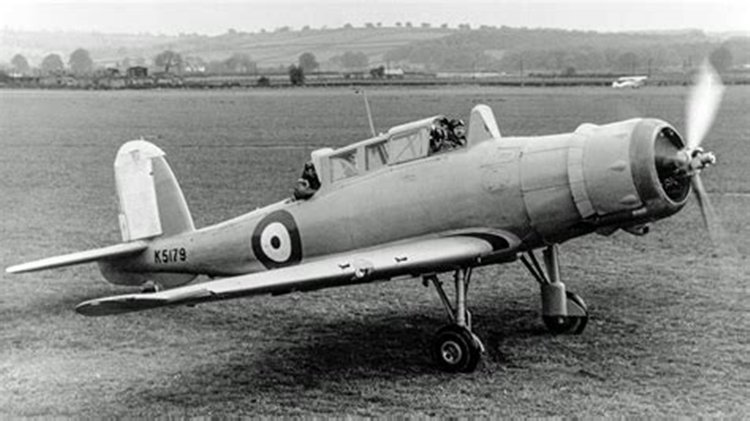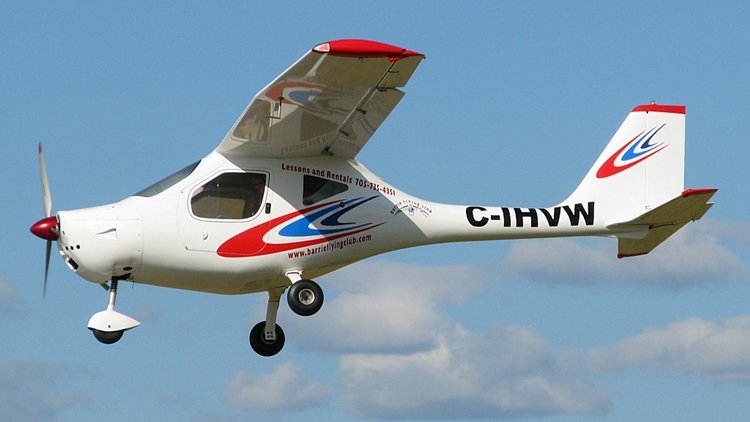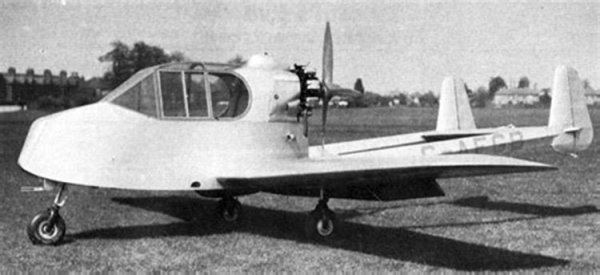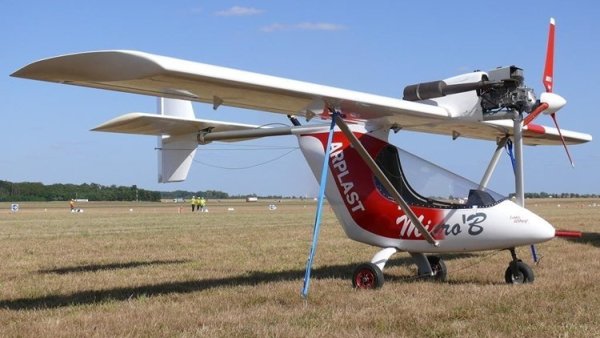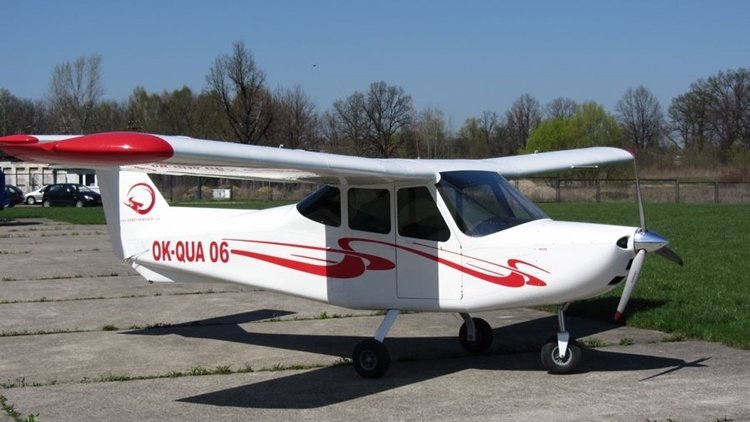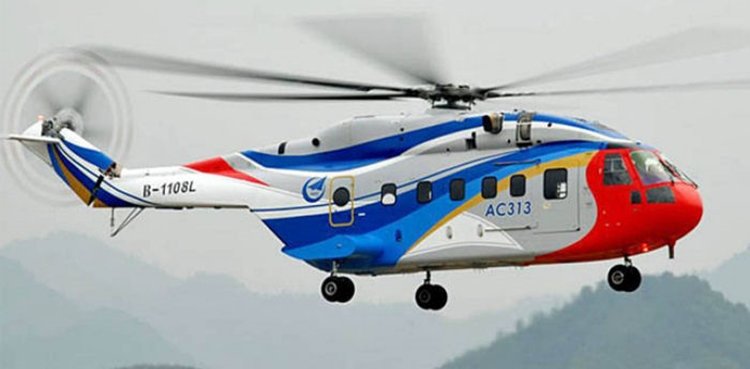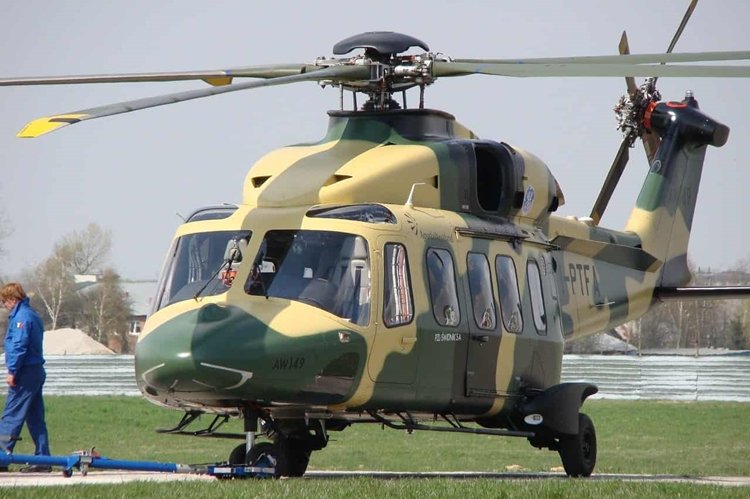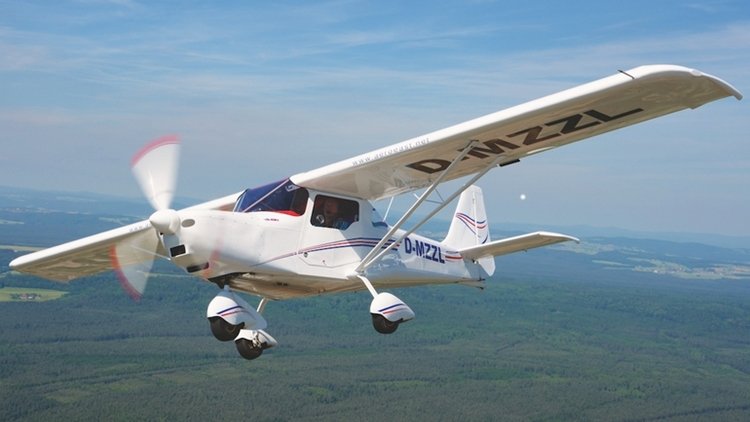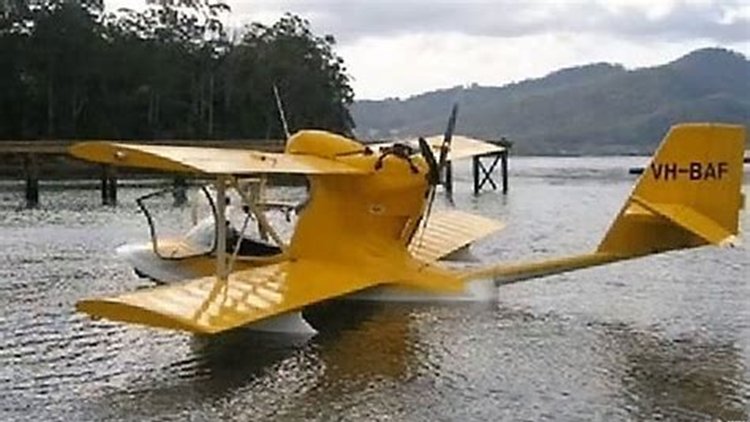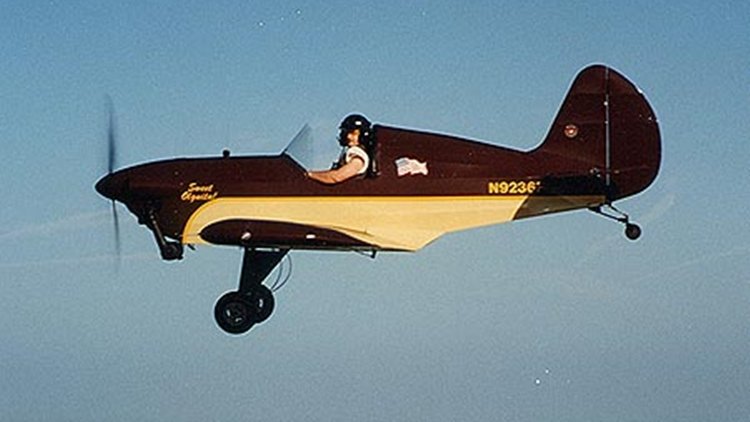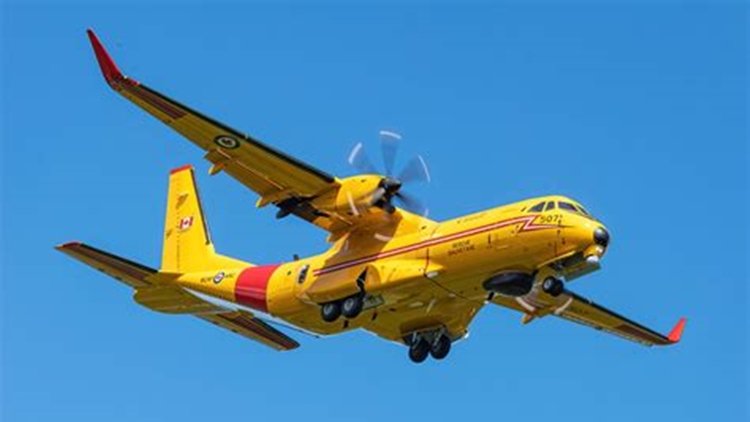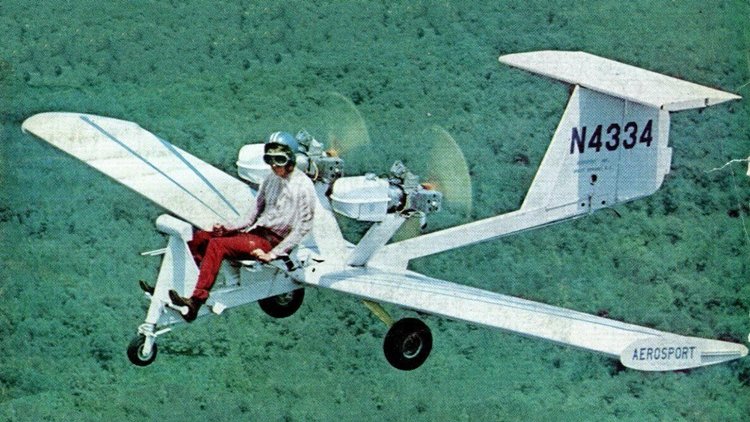-
Posts
7,646 -
Joined
-
Last visited
-
Days Won
67
Content Type
Profiles
Forums
Gallery
Downloads
Blogs
Events
Store
Aircraft
Resources
Tutorials
Articles
Classifieds
Movies
Books
Community Map
Quizzes
Videos Directory
Everything posted by red750
-
The Mitsubishi Ki-83 (キ83) was a Japanese experimental long range heavy fighter designed near the end of World War II. It did not reach production status. The Mitsubishi Ki-83 was designed as a long range heavy fighter. It was designed and built by a team led by Tomio Kubo, designer of the highly successful Mitsubishi Ki-46. The design was a response to a 1943 specification for a new heavy fighter with great range. The first of four prototypes flew on 18 November 1944. The machines displayed remarkable maneuverability for aircraft of their size, being able to execute a 671 m (2,200 ft) diameter loop in just 31 seconds at a speed of over 644 km/h (400 mph). The Ki-83 carried a powerful armament of two 30 mm (1.18 in) and two 20 mm cannon in its nose. Despite the bomb-ravaged Japanese manufacturing sector, plans for the Ki-83 to enter production were underway when Japan surrendered on 15 August 1945. Both the existence and performance of the Ki-83 were little known during the war, even in Japan. It was completely unknown in Allied military aviation circles – as demonstrated by the fact that the Ki-83 had not been given a reporting name. Most early photographs of the type were taken during the post-war occupation of Japan, when the four prototypes were seized by the United States Army Air Forces and repainted with USAAF insignia. When they were evaluated by U.S. aeronautical engineers and other experts, a Ki-83 using high-octane fuel reached a speed of 762 km/h (473 mph), at an altitude of 7,000 metres (23,000 ft). Variants Ki-83 experimental long-range heavy fighter, four prototypes built. Ki-95 projected reconnaissance version, none built. Ki-103 projected development, none built
-
The Blackburn B-24 Skua was a carrier-based low-wing, two-seater, single-radial engine aircraft by the British aviation company Blackburn Aircraft. It was the first Royal Navy carrier-borne all-metal cantilever monoplane aircraft, as well as the first dive bomber in Fleet Air Arm (FAA) service. The aircraft took its name from the sea bird which 'divebombs' any potential predators that come too close to its nest. The Skua was designed during the mid-1930s to Specification O.27/34, and was a radical design for the era, combining the functions of a dive bomber and fighter. Its enclosed cockpit and monoplane configuration were obvious shifts from preceding FAA aircraft such as the Hawker Nimrod and Hawker Osprey biplanes. On 9 February 1937, the first prototype performed its maiden flight; it was ordered straight off the drawing board to accelerate its development. In November 1938, the Skua was introduced to FAA service; 33 aircraft were operational by the outbreak of the Second World War. During the early half of the conflict, the Skua was heavily involved in the Norwegian campaign and sank the German cruiser Königsberg, the first major warship sunk in war by air attack and by dive-bombers. It was present during the Battles of Narvik, the Dunkirk evacuation and also the early stages of the Mediterranean theatre. While a capable dive bomber, its poor top speed and rate of climb meant it was severely limited as a fighter aircraft. Despite this, Fleet Air Arm pilots achieved moderate success with the Skua, scoring numerous aerial victories during the Norwegian and Mediterranean campaigns, with at least one pilot making ace status with five victories. In 1941, the Skua was relegated from frontline operations, but continued to be operated in secondary roles, typically training and target tug duties, as late as March 1945. The Blackburn Skua was configured as a low-wing cantilever monoplane of all-metal construction Its fuselage drew on the design of the Blackburn Shark, an earlier biplane, making extensive use of flush-riveted Alclad. It was internally divided into two water-tight compartments beneath the pilot's and gunner's cockpits to provide sufficient buoyancy in the event of a forcing landing at sea For the same reason, the crew compartments were also watertight up to the edges of the cockpit. The fuselage was stressed to withstand catapult-assisted takeoffs and arrested landings aboard aircraft carriers; a hydraulic damping device was incorporated in the hook. The mainplane, both the structure and covering of which was also composed of Alclad, was built as three separate units. The twin-spar heavy centre section was bolted beneath the fuselage to form the bottom of the watertight compartment. The outer wing panels, which tapered in both plan and thickness, ended in detachable upswept tips and were sealed between the main spars to form additional watertight compartments. Recesses in the lower surface of the wing accommodated modified Zap flaps that were used to shorten takeoff runs, steepen glides, and limit the aircraft's speed during steep dives. Balanced ailerons were fitted, which used inset hinges with mass balance assistance. The number built was 192. For many more details, click here.
-
The Bilsam Sky Cruiser is a Polish microlight aircraft designed and produced by Bilsam Aviation of Poznań, introduced in the early 2000s. The aircraft is supplied as a complete ready-to-fly-aircraft, as a kit and in the form of plans for amateur construction. The manufacturer's website is non-functional and has been so since about 2008, so it is not clear if the company is still in business. The aircraft was designed to comply with the Fédération Aéronautique Internationale microlight category, including the category's maximum gross weight of 450 kg (992 lb). The aircraft has a maximum gross weight of 450 kg (992 lb). With a Rotax 912 ULS engine it is an accepted US light sport aircraft and also a Transport Canada accepted Advanced Ultra-Light Aeroplane. Originally shown as a pusher configuration design in 2003, by 2004 the aircraft had been redesigned. In its production configuration the Sky Cruiser features a cantilever high-wing, a two-seats-in-side-by-side configuration enclosed cabin with doors for access, fixed tricycle landing gear with wheel pants and a single engine in tractor configuration. The aircraft is made from composite material. Its 9.0 m (29.5 ft) span wing mounts flaps and has a wing area of 10.35 m2 (111.4 sq ft). The standard engine used is the 100 hp (75 kW) Suzuki automotive conversion powerplant. The aircraft has a typical empty weight of 250 kg (550 lb) and a gross weight of 450 kg (990 lb), giving a useful load of 200 kg (440 lb). With full fuel of 60 litres (13 imp gal; 16 US gal) the payload for pilot, passenger and baggage is 157 kg (346 lb). The Sky Cruiser was redesigned by BOT Aircraft as the BOT SC07 Speed Cruiser.
-
The Bellanca 28-92 Trimotor was a racing aircraft built to compete in the Istres-Damascus-Paris Air Race of 1937, and was paid for by popular subscription in Romania. Christened Alba Julia ("White Julia", registration YR-AHA) it was piloted by Captain Alexander Papana of the Romanian Air Force . The aircraft was a low-wing cantilever monoplane with a similar fuselage to the Bellanca 28-70 and 28-90, but was fitted with three engines, one in the nose, and one in each of two underwing nacelles. The nacelles also housed the main undercarriage units when retracted. The fuselage was of tubular steel construction and covered by aluminum back to the cockpit. Aft of the cockpit, the fuselage was covered with fabric. The wings and tail were plywood-covered, and the control surfaces were covered by fabric. The main undercarriage partially retracted into the rear of the wing engine nacelles, but the tailwheel did not retract. Installed in each wing of the aircraft was a 250-HP (186 kW) Menasco C6S4 Super Buccaneer engine. The C6S4 was a direct drive, air-cooled, inverted, straight-six aircraft engine. The C6S4 was supercharged and displaced 544 cu. in. (8.9 L). Each C6S4 engine drove a 6-ft. 6 in (0.15 m) diameter, two-blade, adjustable-pitch propeller. In 1938, Bellanca re-registered the aircraft in the United States as NX2433 and entered it in the Bendix Trophy cross-country race. Frank Cordova was the pilot for the race, and the trimotor flew as race number 99. Unfortunately, because of engine trouble, the aircraft did not finish the cross-country race. The aircraft competed in the 1939 Bendix Trophy race, placing second, piloted by Arthur Bussy. After being sold in South America, the 28-92 ended its days rotting in a small field in Ecuador. Only 1 was built.
-
The Arpin A-1 was a two-seat low-wing monoplane which was powered by a single radial engine in pusher configuration, mounted behind the cabin between twin booms that carried the tail. An unconventional fixed tricycle undercarriage was fitted. Only one was built. The Arpin A-1 was a low-wing monoplane of wooden construction and plywood covered. The empennage was carried on a pair of diamond cross section booms mounted on the rear wing spar at the edge of the centre section. The fins were tall, with a slight extension below the boom and carrying unbalanced rudders. The booms were at wing height but the side by side two seat enclosed cabin sat on the wing with the uncowled 68 hp (51 kW) British Salmson AD.9R radial immediately behind, with its centre line well above the booms and tailplane. The pusher arrangement and a short nose provided good visibility from the cabin. The Arpin had a fixed tricycle undercarriage at a time when most aircraft used the tailwheel configuration. It was the first British aircraft to be designed for tricycle landing gear. In 1938 a very unusual McClaren type was fitted, which allowed all three wheels to be turned parallel to each other but not to the aircraft, so that cross wind landings could be made with the aircraft pointing into wind. The front wheel could be left to caster or could be steered by the pilot.
-
The Arplast Micro'B (English: Microbe) is a French ultralight aircraft that was designed and produced by propeller manufacturer Arplast Helice. It was supplied as a kit for amateur construction or as a complete ready-to-fly-aircraft. The Arplast Micro'B was designed to comply with the Fédération Aéronautique Internationale microlight rules, with a lightened version for the US FAR 103 Ultralight Vehicles category. It features a strut-braced high-wing, a single-seat enclosed cockpit, fixed tricycle landing gear and a single engine in tractor configuration. The Micro'B is made from a combination of welded steel and carbon fibre, with the flying surfaces made from the latter material. Its 8.6 m (28.2 ft) span wing is supported by a single strut per side and features automatic flaps. Standard engines included the 40 hp (30 kW) Rotax 447 two-stroke or other small lightweight motors, mounted on the main keel tube above the cockpit.
-
The Ameur Altania was a single-engine light aircraft of pusher configuration with side-by-side seats for two and a V-tail, designed in France in the 1990s. Several prototypes were built and flown, including a 15 m span motorglider version; the final prototype was constructed from carbon composites rather than glass fibre. Another version, the UCA Carbon Bird has been built by Universal Composite Aviation after the bankruptcy of Ameur Aviation. The Altania was designed by the Corsica-based Ameur Aviation Technologie group (AAT) as the AAT Balbuzard (Osprey in English). It was a low-wing monoplane of pusher configuration, with a single buried engine driving a propeller at the extreme rear via a long driveshaft. The engine was mounted over the wing with a dorsal shallow air intake just behind the cabin. Behind the engine the fuselage became a slender boom, terminating in a butterfly tail and two ventral strakes. The cabin seated two side by side, with a small luggage space behind, and was enclosed by a forward-hinged, single piece canopy. There was a retractable tricycle undercarriage with inward retracting mainwheels, fitted with hydraulic brakes. Five prototypes The first prototype Balbuzard flew on 9 July 1995, powered by a 60 kW (80 hp) Rotax 912. Like the next three prototypes, this aircraft had a glass fibre structure. The second prototype had an 88 kW (118 hp) Textron Lycoming O-235 engine, driving a three-blade, fixed pitch propeller, and a longer span and lower set wing fitted with winglets. The undercarriage height was also increased. This second prototype F-W(P)ARA was lost in 1997 when the propeller driveshaft failed in flight; The third prototype, similarly powered, was renamed the Baljims 1A because of copyright issues. Between them, the second and third prototypes achieved 350 hours of flight testing. The fourth prototype was a long span (15 m or 49 ft 2.5 in) motorglider, only flown for 30 hours before its development was abandoned. The fifth aircraft, the Ameur Altania prototype, was built from pre-impregnated carbon-epoxy and honeycomb, because glass fibre construction of these prototypes led to excess weight. The fuselage was single piece and the single spar wing had double-slotted flaps and upturned tips. It flew in December 2001. This fifth prototype aircraft/first Altania F-WWMU is recorded as damaged in July 2005, with no mention of repair.
-
-
The Aero-Service Panda is a Polish ultralight, designed and produced by Aero-Service Jacek Skopiński of Warsaw. The aircraft is supplied complete and ready-to-fly. The Panda was designed to comply with the Fédération Aéronautique Internationale microlight rules. It features a cantilever high-wing, a T-tail, a two-seats-in-side-by-side configuration enclosed cabin, fixed tricycle landing gear and a single engine in tractor configuration. The aircraft is made from sheet aluminum, with some parts, such as the engine cowling and wing tips made from composites. Its 8.91 m (29.2 ft) span wing employs a modified NACA 633-618 airfoil, has an area of 10.6 sq m (114 sq ft) and flaps. The cabin width is 120 cm (47 in). The Panda prototype was first flown on 28 September 2011. Reviewer Marino Boric described the design in a 2015 review as possessing visibility that "is good in all directions because of very large glassed surfaces". He also noted that it is "sold at a reasonable price". Variants Panda Standard (Specifications below) Base model powered by an 80 hp (60 kW) Rotax 912UL four-stroke powerplant.[1] Panda Sport Model powered by a 100 hp (75 kW) Rotax 912ULS four-stroke powerplant.[1] Panda Exclusive Model powered by a 100 hp (75 kW) Rotax 912ULS four-stroke powerplant plus with a Dynon glass cockpit and other options as standard.
-
The Avicopter AC313 (also known as the Changhe Z-8F-100) is a civilian helicopter built by Avicopter (AVIC Helicopter Company). It is a development of the earlier Harbin Z-8, itself a locally produced version of the Aerospatiale Super Frelon. The AC313 is an updated design based on the earlier Harbin Z-8, itself a development of the Aérospatiale Super Frelon. The prototype first flew at Jingdezhen, Jiangxi on 18 March 2010. It is designed to carry 18 passengers, has a reported maximum range of 1,050 kilometres, and a maximum takeoff weight of 13 tonnes. It is equipped with three Pratt & Whitney Canada PT6B-67A engines, the AC313 is a single-rotor helicopter with tail rotors, side-by-side pilot seating, and a non-retractable landing gear. Although based on a 1960s design, the AC313 has been developed to use composite materials for the rotor blade and titanium main rotor. Composite materials are used on 50% of the helicopter and titanium is used for the remainder. The interior comes equipped with a modern integrated digital avionics system and has a cabin height of 1.83 m and 23.5 m3 in space. Designed to carry 27 passengers and two crew in the transport role, it has also been designed to be used for VIP transport, medical evacuations, and for search and rescue operations. In terms of cargo, it can carry up to 4 tonne internally or 5 tonnes on a sling. AC313 is equipped with electronic flight instrument system. The AC313 is only the second helicopter to be able to operate in the Qinghai-Tibet Plateau, first being Sikorsky S-70C Black Hawk. The flight testing period for the 13-tonne AC313 was conducted in Hulunbuir City, Inner Mongolia, starting in January where it was tested to operate in extremely low temperatures as low as minus 46C marking the scope of Asia's largest tonnage helicopter meeting the mission requirements of the cold climate and the Earth's polar regions. The helicopter also set its speed record of 336 km per hour during the testing period. The AC313 became the first China-made aircraft authorized by China's civil aviation authority in January to fly in high-altitude regions of over 4,500 meters above the sea level. The AC313 has recently received a Type Certificate issued by the Civil Aviation Administration of China (CAAC). Following Chinese certification, the first five AC313 are to be delivered to Flying Dragon Special Aviation, in 2011, but no aircraft have been delivered yet. Avicopter has plans to certify the AC313 for sales in Europe and the United States. Xu Chaoliang, the chief designer of the helicopter, said the company has so far received 32 orders from national and international customers. Equipped with advanced instrument landing system, the helicopter can be used for disaster relief even in blizzard weather in plateau regions. CAIH, a wholly owned subsidiary of the China Aviation Industry Corp, is expected to produce 300 helicopters annually by 2015, making it one of the major helicopter suppliers in the world. Headquartered in Tianjin, the company is mainly engaged in the research and development, production, maintenance and sales of helicopters and other aircraft and aviation components. Variants AC313 Commercial helicopter model derived from Changhe Z-8F. AC313A Improved AC313 with significant structural redesign, with enlarged internal load area similar to that of Changhe Z-8L. Maiden flight on 17 May 2022.
-
The AgustaWestland AW149 is a medium-lift multi-role military helicopter developed by AgustaWestland, now Leonardo, launched in 2006 and had its first flight in 2009. By 2014 it had received military flight certification, and it went on to enter production going into military service with Egypt and Thailand. It is also planned for Poland with a new PZL-Swidnik production line there that opened in 2024, and North Macedonia has a pending order. The aircraft the only contender for the British NMH procurement program in the 2020s. The AW149 began life as an all-new, military design. [1] It was unveiled at the 2006 Farnborough Air Show, with a larger fuselage and more powerful engines compared to the AW139, resulting in a greater cargo volume and payload carrying ability. On 13 November 2009, the first prototype conducted its first flight from AgustaWestland's Vergiate manufacturing facility in northern Italy. On 26 February 2011, the second prototype, the first with production model engines, made its first flight from Vergiate. On 20 June 2011 AgustaWestland announced the AW189, a civilian development of the AW149, for service in 2013. For operational history and operators, click here.
-
The Aero East Europe Sila (English: force, power or strength and also short for Serbian industry light aircraft) is a family of Serbian ultralight and light aircraft, designed and produced by Aero East Europe of Kraljevo and later of Jagodina, introduced at the AERO Friedrichshafen show in 2013. The design is supplied complete and ready-to-fly. The Sila 450 C was designed to comply with the Fédération Aéronautique Internationale microlight rules, while the larger aircraft in the family fit into the EASA CS-VLA category. All feature a V-strut-braced high-wing, an enclosed cabin, fixed tricycle landing gear and a single engine in tractor configuration. Reviewer Marino Boric described the design in a 2015 review as "very robust". Variants Sila 450 C (Specifications below) Two seat "Cruiser" model, with a semi-monocoque structure made from aluminium sheet and a maximum take-off weight of 450 kg (990 lb). Its 9.4 m (30.8 ft) span wing employs a NACA 5417 airfoil, has an area of 11.94 m2 (128.5 sq ft) and flaps. Standard engines available are the 80 hp (60 kW) Rotax 912UL, 100 hp (75 kW) Rotax 912ULS and the 115 hp (86 kW) Rotax 914 four-stroke powerplants. German LTF-UL and Serbian ultralight certified. Sila 750 C Two seat "Cruiser" model, with a semi-monocoque structure made from aluminium sheet and a maximum take-off weight of 750 kg (1,650 lb). Its 9.47 m (31.1 ft) span wing employs a NACA 5417 airfoil, has an area of 11.94 m2 (128.5 sq ft) and flaps. Standard engines available are the 100 hp (75 kW) Rotax 912ULS, the 115 hp (86 kW) Rotax 914 and the 160 hp (119 kW) Lycoming O-320 four-stroke powerplants. The aircraft is undergoing EASA CS-VLA and Serbian certification. Sila 750 S Two seat STOL model with full-span Junkers flaperons and a maximum take-off weight of 750 kg (1,650 lb). Sila 750 MT Three seat Medical Transport model, with a semi-monocoque structure made from aluminium sheet and steel tubing and a maximum take-off weight of 750 kg (1,650 lb). Its 10 m (32.8 ft) span wing employs a NACA 65-018 airfoil, full-span Junkers flaperons, has an area of 14.30 m2 (153.9 sq ft). Standard engines available are the 100 hp (75 kW) Rotax 912ULS, the 115 hp (86 kW) Rotax 914 and the 160 hp (119 kW) Lycoming O-320 four-stroke powerplants. The aircraft is undergoing EASA VLA and Serbian certification. Sila 950 Four seat model, with a maximum take-off weight of 950 kg (2,090 lb). Standard engines available are the 115 hp (86 kW) Rotax 914 and the 160 hp (119 kW) Lycoming O-320 four-stroke powerplants. The aircraft is no longer advertised on the company website.
-
The AAC SeaStar is an amphibious biplane that was produced in kitplane form. The aircraft is built largely of composite materials and features wings that may be easily removed for transport, and a ballistic recovery system in the form of a parachute that can be deployed from the engine nacelle. AAC also marketed a Super Pétrel model in 2011. This aircraft should not be confused with another composite-built small flying boat with the same name, the SeaStar Aircraft SeaStar.
-
The Dornier Do 19 was a German four-engine heavy bomber that first flew on 28 October 1936. Only one prototype flew, and it was converted to a transport in 1938. The other two were scrapped. The Luftwaffe lacked an efficient heavy bomber fleet. Generalleutnant Walther Wever, the Luftwaffe's first Chief of Staff, was the most persistent advocate of a German long-range strategic bomber fleet. The Dornier Do 19 was built for the Luftwaffe's Ural bomber program under General Wever, competing against the Junkers Ju 89. The RLM Technisches Amt issued a specification for a four-engine heavy bomber. But after Wever's death in an airplane crash in June 1936, Wever's successor, Albert Kesselring, canceled Germany's long-range bomber projects to concentrate on tactical bombers. Both Dornier and Junkers were competitors for the contract, and each received an order for three prototypes in late 1935. The Dornier design was given the project number Do 19, while the Junkers prototype became the Ju 89. The Dornier Do 19 was a mid-wing cantilever design, and was mostly metal in construction. It had a rectangular-section fuselage and the tail had braced twin fins and rudders, mounted on the upper surface of the tailplane, itself set low on the rear fuselage. This was quite similar to the tail of the contemporary British Armstrong Whitworth Whitley medium bomber. It also had retractable landing gear, including the tailwheel. The powerplant, according to some sources, was supposed to be four Bramo 322H-2 radial engines that were mounted in nacelles at the leading edges of the wings. Its crew of ten would have consisted of a pilot, co-pilot, navigator, bombardier, radio operator, and five gunners.
-
The Caudron C.450 and C.460 were French racing aircraft built to participate in the Coupe Deutsch de la Meurthe race of 1934. Developed from the Caudron C.362 flown in the previous year's race, a single C.450 and three C.460s were built for the 1934 event. All were powered by a supercharged Renault 456 six-cylinder inverted air-cooled engine driving a Ratier two-position variable-pitch propeller. The airframe was primarily built from spruce and birch plywood, with steel and alloy engine bearers and magnesium cowling and fuel tanks. The wings were fitted with split flaps and the angle of incidence of the tailplane could be varied while in flight. The principal difference between the types was that the C.450 had a fixed spatted undercarriage, while the C.460 had a retractable undercarriage. This difference resulted in structural differences, the retractable undercarriage necessitating a two-spar wing for the C.460 in contrast to the single-spar wing used by the C.450. For the 1936 Coupe de la Meurthe competition Caudron built two examples of a development of the C.460, the C.461. This was slightly larger, 8.185 metres (26 ft 10 in) long with a wingspan of 6.75 metres (22 ft 2 in) and weighing 661 kilograms (1,457 lb) empty and had a radically redesigned cockpit, the top being flush with the top of the fuselage and forward vision being limited to what could be seen through glazed-over semi-circular channels set into either side of the fuselage. Three variants were built, C.350, C.360, and C.361, witha total of 6 units across all variants were built. For details of service history, click here.
-
The LearStang Lowdown is an air racer which looks like a P51D Mustang, but is a completely new aircraft, using components from a number of aircraft, such at the wings and horizontal stabilizer of a Learjet and undercarriage of a Cessna 420 strengthened by components of a Piper Cheyenne and tyres from a Grumman Gulfstream nose gear. For further details, click here.
-
The Howland H-3 Pegasus is an American ultralight aircraft that was designed by Bert Howland and made available by Howland Aero Design in the form of plans for amateur construction, with kits provided by Aircraft Spruce & Specialty Co. The H-3 first flew in 1988. The aircraft is a monoplane derivation of the biplane H-2 Honey Bee and was designed to comply with the US FAR 103 Ultralight Vehicles rules, including the category's maximum empty weight of 254 lb (115 kg). The aircraft has a standard empty weight of 252 lb (114 kg), when equipped with the now-out of production Rotax 277 single cylinder engine. If equipped with heavier engines it falls into the Experimental - Amateur-built category in its home country, although still qualifies as an ultralight in other countries, such as Canada. The H-3 features a cantilever low-wing, a single-seat, open cockpit, conventional landing gear and a single engine in tractor configuration. The aircraft is made from wood and aluminium and covered in doped aircraft fabric covering. The fuselage is made from square aluminum tubing that is TIG welded and weighs 18 lb (8 kg) when completed. Its 25 ft (7.6 m) span wing is of a straight planform. The landing gear is conventional, with suspended main wheels and a steerable tailwheel. The cockpit is of an open design, with a small windshield. Controls are conventional three-axis, with ailerons, rudder and elevator. Since the death of the designer plans have been intermittently available and were last provided by Classic Aero Enterprises. Aircraft Spruce and Specialty continue to provide raw materials kits. The aircraft has an acceptable power range of 28 to 55 hp (21 to 41 kW). The use of the 28 hp (21 kW) Rotax 277, or the similar weight and power Hirth F-33, allows the aircraft to fit into the US ultralight category if weight is carefully controlled during construction. However the H-3 is underpowered with this engine and most have been equipped with heavier engines of higher output, such as the 40 hp (30 kW) Rotax 447 or the 50 hp (37 kW) Rotax 503. The 30 hp (22 kW) Hirth F-263 and 53 hp (40 kW) Hirth 2704 have also been used. he H-3 won The Most Innovative Ultralight at Sun 'n Fun in 1989 and Best Commercial Ultralight at Sun 'n Fun 1990.
-
The Airbus C295 (previously CASA C-295) is a medium tactical transport aircraft that was designed and initially manufactured by the Spanish aerospace company CASA, which is now part of the European multinational Airbus Defence and Space division. Work on what would become the C-295 was started during the 1990s as a derivative of the successful CASA/IPTN CN-235 transport aircraft. On 28 November 1997, the prototype performed its maiden flight; quantity production commenced shortly thereafter. In April 1999, the Spanish Air Force became its launch customer with an order for nine military-configured C-295s; two years later, the type was declared operational with the service. Further orders for the C-295 would promptly follow. Following the incorporation of CASA into the pan-European aeronautical group EADS in 2000, it was redesignated as the EADS CASA C-295. EADS rebranded itself as Airbus in 2015. Both manufacturing and final assembly of the C-295 is normally performed at the Airbus Defence and Space facilities in San Pablo Airport, located in Seville, Spain. Additional manufacturing arrangements have been agreed with some customers. Since 2011, Indonesian Aerospace has produced the CN-295 under license at their facilities in Bandung, Indonesia, via an industrial collaboration with Airbus Defence & Space. During 2021, it was agreed that, as a part of a larger purchase, a batch of 40 C-295s for the Indian Air Force would be license-manufactured in India by Tata Advanced Systems. The aircraft will be manufactured in TASL's Vadodara facility in Gujarat, India. As a part of further order for the Indian Navy and the Indian Coast Guard, the facility will also process delivery of 12 more aircraft for Maritime Patrol roles. Beyond its use as a tactical transporter, the C-295 is capable of performing a wide variety of missions effectively. These include parachute and cargo dropping, electronic signals intelligence (ELINT), medical evacuation (MEDEVAC), and maritime patrol. Some of the equipment for adapting the aircraft to performing various roles has been mounted onto pallets, allowing for its rapid installation and removal. For more detai;s, including development, operational history and 11 variants, click here.
-
Electra unveiled its plans for a nine-passenger EL9 ultra-short takeoff and landing (STOL) hybrid aircraft that will rely on distributed electric propulsion and blown-wing technology to take off with as little as 150 feet of runway. Calling the EL9 “just an airplane,” Electra CEO Marc Allen told a gathering at the company’s facilities on November 13 in Manassas, Virginia, that the reveal marks the launch of a “real product” rather than a vision. “It's not a prototype. It's not a concept. This is a product; it's a real-world, world-changing product,” said the former senior Boeing executive. Targeted to reach market in 2029, the EL9 is designed to foster the concept of what Electra calls direct aviation—the ability to fly point-to-point directly to where a passenger wants, whether a parking lot, heliport, grass field, or small regional airport or other traditional airport infrastructure. “Ultra short” refers to the vehicle’s ability to operate into and out of a soccer field-sized space. Electra aims to bring an affordable aircraft to market that addresses issues surrounding access, noise, and emissions, Allen added. The ambition is to provide the EL9 with eVTOL or helicopter capabilities for flexibility in takeoff and landing but with a 1,100-nm range with IFR reserves and a 175-knot cruise speed found with more traditional aircraft. “It unlocks this elixir, which is helicopter-like performance at safety and lower cost levels of a fixed-wing aircraft,” Allen maintained. To be offered in cargo or passenger configuration, the EL9 will be able to carry nine passengers with baggage—or 3,000 pounds of cargo—for 330 nm. The fly-by-wire aircraft is designed with two pilots in mind but is equipped with what Electra calls its Safe Single Pilot technology for single-pilot operations.
-
The Mil Mi-32 was a project for a super-heavy crane helicopter from 1982.A project of the heavy flying crane helicopter with a take-off weight of 140 tons intended for transporting civil and military technics. But due to the break-up of the USSR, was never built beyond prototype..
-
The Team Tango Foxtrot, or Foxtrot 4, is an American amateur-built aircraft, designed and produced by Team Tango of Williston, Florida. The aircraft is supplied as a kit for amateur construction, with or without factory builder assistance. The Foxtrot was developed as a four-seat version of the Tango 2 and shares many of the two-seater's features. The Foxtrot has a cantilever low-wing, a four-seat enclosed cockpit, fixed tricycle landing gear and a single engine in tractor configuration. The rear seats have limited visibility. The aircraft is made from composites. Its 32 ft (9.8 m) span wing employs a NACA 64-415 airfoil, has an area of 128 sq ft (11.9 m2) and mounts flaps. The engines recommended are Lycoming Engines of 200 to 350 hp (149 to 261 kW). A development of the Foxtrot was the Foxtrot XR, an extended range variant, this aircraft having a fuel capacity of up to 833 litres (184 Imp gals), a useful load of between 726 kg and 1,043 kg (1,600 lb and 2,300 lb), and the ability to fly up to 3,701 km (2,300 miles) with two persons on board with their luggage, having a maximum take-off weight of up to 1,905 kg (4,200 lb).
-
Photos: Record-breaking supersonic jet reaches 66,000 feet in 118.6 seconds Details and photos here
-

3 more gone too soon. Near Maffra 16/11/24
red750 replied to BirdDog's topic in Aircraft Incidents and Accidents
More background on the deceased. https://www.dailymail.co.uk/news/article-14095111/Tinamba-West-plane-crash.html?ito=social-facebook -
The Aerosport Rail is an American minimalist ultralight aircraft, designed by Harris Woods and built by Aerosport Inc. The aircraft was first flown on 14 November 1970. Included in this category due to the dual engines. The Rail is little more than a 2 by 5 inch squared aluminium tube (rail) with all-metal wings and a T-tail. The pilot sits on the tube, just ahead of and above the wings. Two small two-cycle engines derated to 25 hp (19 kW) are mounted on struts behind the seat on either side of centerline, driving pusher propellers. Individual 4 U.S. gallons (15 L; 3.3 imp gal) fiberglass fuel tanks are mounted in front of each engine. About 175 sets of plans were sold between 1970 and 1977. The follow-on design, the Aerosport Quail uses the Rail's wing design for an enclosed tractor configuration homebuilt aircraft.
-
A British Airways flight avoided colliding with a pair of illegally flown drones by just metres, putting 200 passengers' lives at risk, a report has revealed. The Airbus A321 on a flight from Rome was at a height of 800ft and on its final approach to Heathrow when the terrifying near-miss happened. The plane was quickly descending at 160mph when the two drones loomed into view at 1pm on July 28 over Isleworth, west London. Flying at about 800ft, they were just 50ft above the plane as it soared beneath them, meaning the risk to the plane and passengers was severe. A report by the UK Airprox Board, which assesses near misses, rated it a Category A incident where there was a serious risk of collision. The drones were being flown illegally at double the usual 400ft maximum height for the devices. It is believed that they were deliberately being flown just outside the 5km restriction zone for drones which extends from the ends of every airport runway in the UK. The pilot or pilots of the devices risked prosecution for endangering an aircraft by reckless flying which carries a maximum penalty of five years in jail - but they were never caught.






